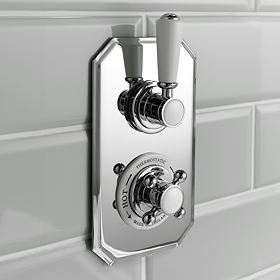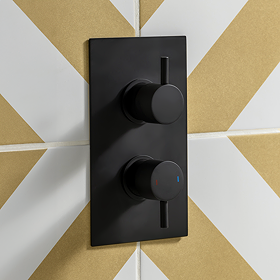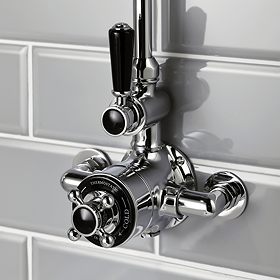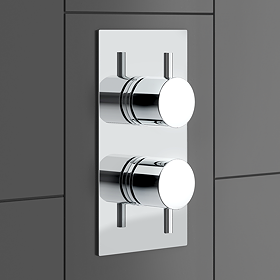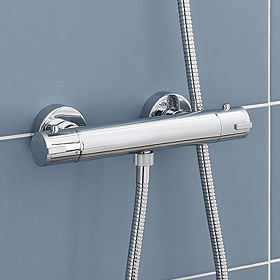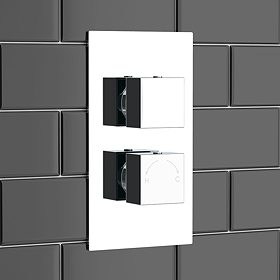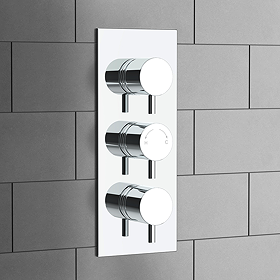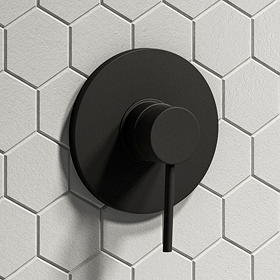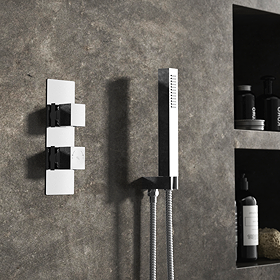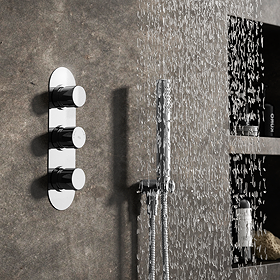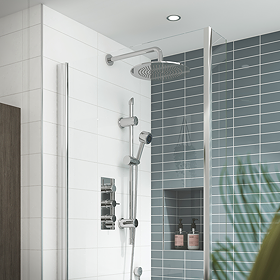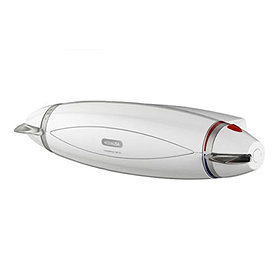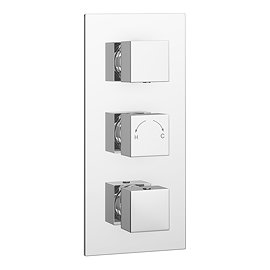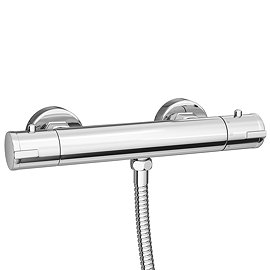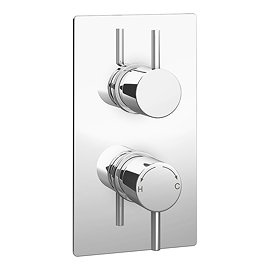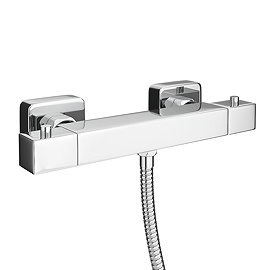When installing a new shower system, a key consideration is your choice of shower valve. With a huge range to choose from, it can often be a bit confusing when it comes to selecting the best option for your particular shower. In this guide, we'll help you avoid this potential minefield by explaining key aspects that define different valves, and how they could influence your decision.
What is a shower valve?
A shower valve is a crucial component that regulates both the volume and temperature of water in your shower. Its primary role involves managing the water flow to different shower elements like the shower head, handheld unit or body jets. There's diversity in valve functionality, with variations in how they operate.
What's the difference between manual and thermostatic valves?
One of the first things you need to think about when purchasing a shower valve is whether to go for a manual or a thermostatic valve. These two options have slightly different functions:
- Manual: These are the most basic form of valve. A handle is tilted or turned to achieve the desired flow and temperature of the water. However, as there is no thermostatic element to regulate the water, it can be easy to accidentally scald yourself or be exposed to freezing cold water if someone operates a tap elsewhere in the house while you're showering. This obviously isn't very pleasant, which is why manual shower valves are best suited to those who live alone. Their simplistic nature means they are often a cheaper alternative to thermostatic variants but also less effective.
- Thermostatic: With a thermostatic valve, you get a much more accurate level of control over the flow and temperature of your shower. They are also a safer alternative to manual valves as they are able to regulate the temperature of the water effectively, so there is no risk of scalding or being exposed to sudden changes of temperature at any point. Most thermostatic valves also have a shut off feature if the hot or cold water happens to fail for some reason. These items usually have 2 or 3 handles which control the various components of your shower. There are also digital versions available for an even more precise showering experience.
Should you choose a concealed or exposed shower valve?
Once you've chosen whether you want a manual or thermostatic valve, it's then time to select whether a concealed or exposed option is for you.
- Concealed: As the name suggests, concealed shower valves have elements which are hidden from view which leaves you with just the control panel on display for a more flush appearance. Any pipes are located behind the tiling, giving off a more designer feel. There are plenty of stylish handle options available so you can create just the look you're after with relative ease.
- Exposed: These valves have all their components on display, which can look less tidy than a concealed valve but can also look fantastic in the right setting; they work particularly well in more traditional spaces. They are also much easier to install due to the relative simplicity of their design. Exposed shower valves are normally a less expensive option, although there tends to be less choice on offer when it comes to picking a style.
When it comes to choosing a new shower valve, it all depends on your personal tastes and preferences, as well as the amount of space you have available and the overall look of the room. Thinner walls will be less accommodating for concealed valves, while exposed valves may not suit the style of your bathroom. Take your time, do your research and you'll discover the perfect valve in no time.
